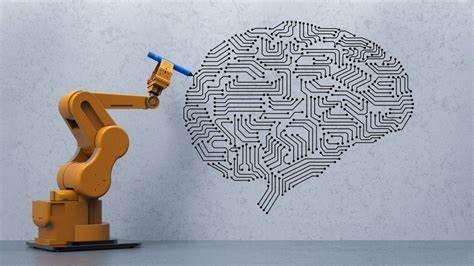Artificial Intelligence (AI) has long been hailed as a groundbreaking technology with the potential to revolutionize labor markets and drive significant productivity gains across various sectors of the economy. However, recent discussions and analyses by the OECD and ING suggest that the anticipated productivity boom from AI may not be as dramatic or immediate as some may expect.
Slow Progress in Country-Level Data
Despite the increasing adoption of AI and other technological advancements in recent years, many developed economies have experienced relatively sluggish productivity growth. The current lack of a substantial AI impact on country-level productivity figures does not necessarily indicate a lack of impact altogether. Historically, major technological innovations like electricity and the internet took time to translate into tangible productivity growth at the macroeconomic level.
Historical Precedents and Productivity Trends
Looking back at previous technological advancements, such as electricity and personal computers, reveals a pattern where productivity growth surged about 20 years after the introduction of the new technology. Similarly, the delayed impact of AI on productivity may follow a similar trajectory, with initial phases potentially leading to a decline before an eventual increase in productivity growth.

The Role of Investments and Infrastructure
The rapid adoption of AI technologies, such as ChatGPT, highlights how accessibility and ease of use can accelerate the diffusion of innovation. Investments in infrastructure and human capital play a crucial role in facilitating the uptake of AI, with potential productivity gains expected to materialize over time as businesses adapt to new technologies.
Company-Level vs. Macro-Level Impact
While company-level studies demonstrate significant productivity improvements resulting from AI adoption, translating these gains to the macroeconomic level presents challenges. Not all sectors or companies may benefit equally from AI, with factors like investment requirements, workforce training, and data availability influencing the extent of productivity gains.
Regional Disparities in Productivity Growth
Analysis suggests that regions with a larger Information Communication & Technology (ICT) sector, like the United States, are likely to experience faster and more substantial productivity gains from AI compared to regions with smaller ICT sectors, such as the European Union. Variances in investment levels, government support, and regulatory environments further shape the productivity landscape across different geographies.
Managing Expectations for AI’s Impact
While AI holds promise for driving productivity growth, realistic expectations are essential. Factors like regulatory constraints, data privacy concerns, and geopolitical dynamics can influence the pace and magnitude of AI’s impact on productivity. Anticipating incremental rather than exponential gains in productivity growth may provide a more balanced outlook on the transformative potential of AI technologies.
In conclusion, while AI is poised to deliver positive productivity shocks at the macroeconomic level, the journey towards realizing these gains may be more gradual and nuanced than anticipated. By understanding historical trends, investing in supportive infrastructure, and managing expectations for AI’s impact, organizations and policymakers can navigate the evolving landscape of productivity growth in the age of artificial intelligence.
Remember, the path to unlocking AI’s full potential lies not just in technological advancements but also in strategic investments, regulatory frameworks, and a holistic approach to harnessing innovation for sustainable productivity growth.









